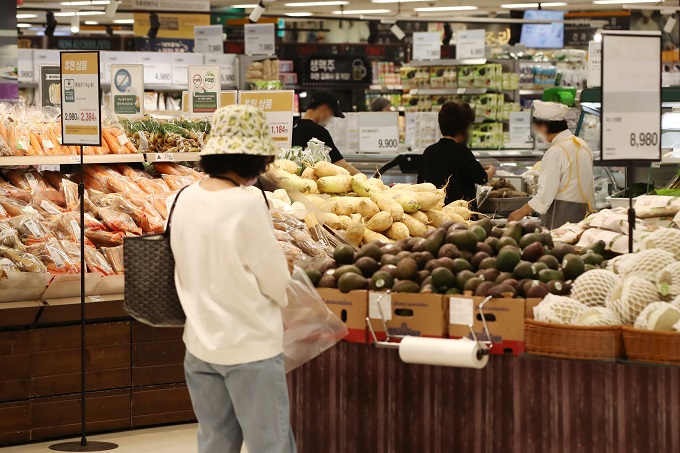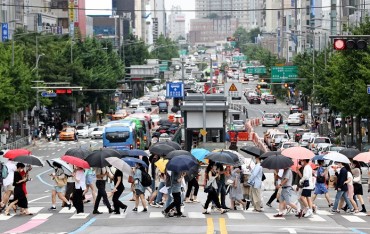
This file photo, taken Sept. 6, 2021, shows a citizen shopping for groceries at a discount store in Seoul. (Yonhap)
SEOUL, March 23 (Korea Bizwire) — Those in low-income groups are bearing a relatively higher inflation burden than those with higher incomes in the era of the COVID-19 pandemic, a local research institute said.
The Korea Economic Research Institute (KERI) analyzed the change in prices felt by consumers for the periods of 2018-2019 and 2020-2021.
The change in prices felt by consumers stood at 2.7 percent for the first income bracket, 2.4 percent for the second income bracket, 2.2 percent for the third income bracket, 2.1 percent for the fourth income bracket and 1.9 percent for the fifth income bracket.
In other words, the change in prices felt by the first income bracket, the group representing the bottom 20 percent earners, was 1.4 times higher than that for the fifth bracket, the group representing the top 20 percent earners.
The KERI attributed that to relatively higher growth in the prices of the items accounting for a larger share in the expenditures of the low income earners.
After the outbreak of the coronavirus in 2020, the share of daily necessities and health-related items in the overall spending of the first income bracket increased, while transportation and eating out took a higher share in the spending of the fifth income bracket.
Among the items whose share in the overall spending of the first income bracket was higher than that of the fifth income bracket, the average price of top three items (housing and utilities, food, and health) rose by 3.7 percent on average.
In contrast, among the items that account for a larger share in the overall spending of the fifth income bracket compared to that of the first income bracket, the average price of the top three items rose by a mere 0.7 percent.
J. S. Shin (js_shin@koreabizwire.com)






